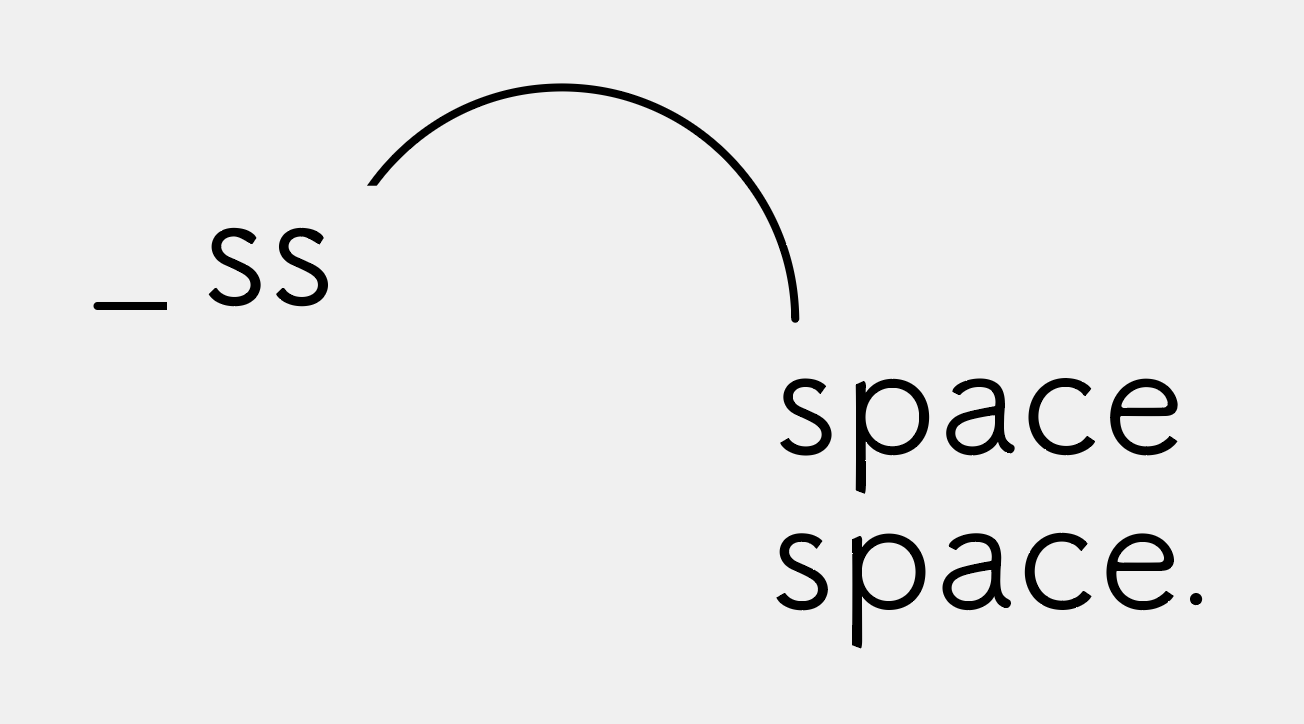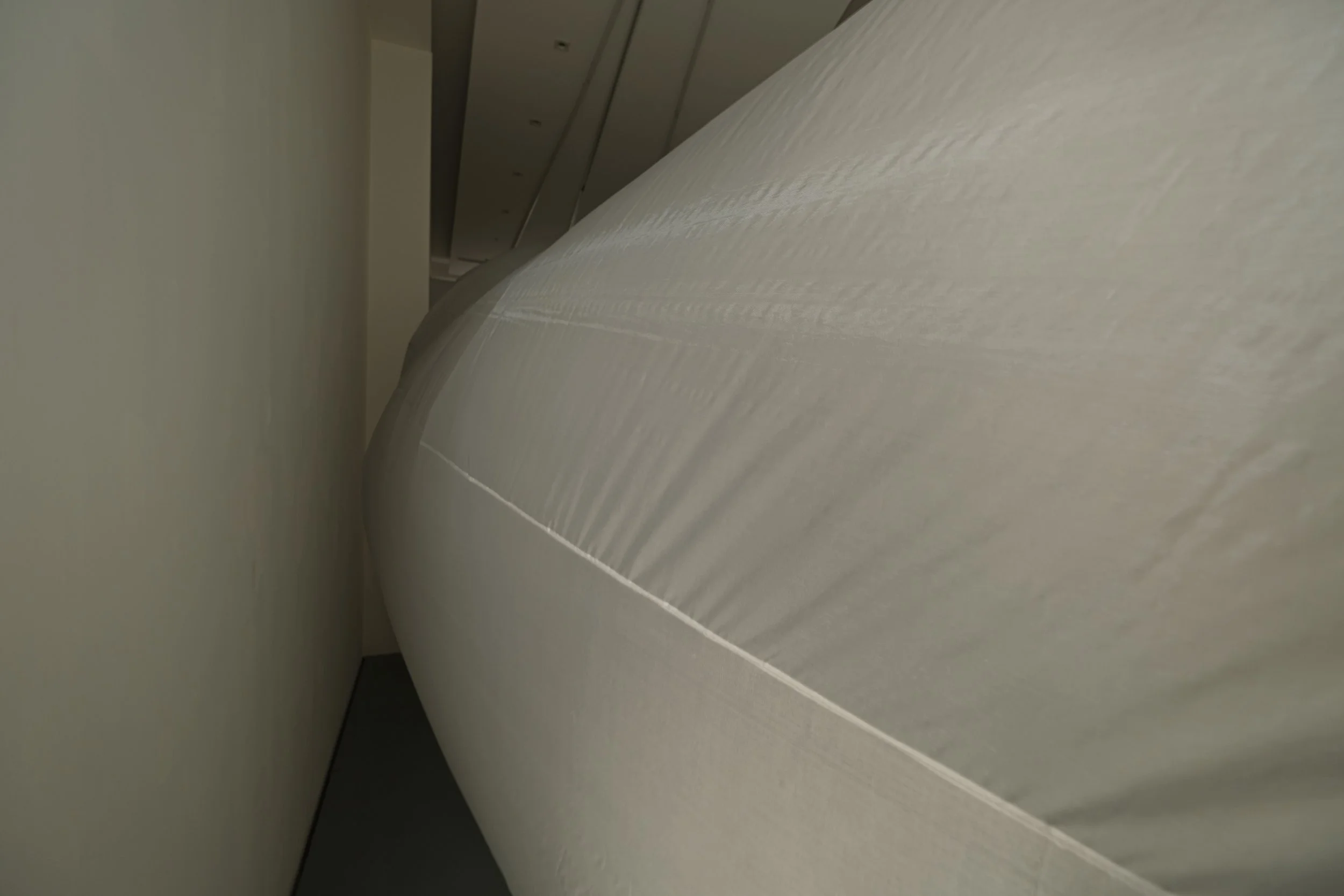The exhibition 'No.108' originates from artist Te Yu Wang's attentive observation of ss space space Bali, developing into a site-specific installation. Her investigation extends beyond the gallery's physical space, encompassing its subtle interactions with the surrounding environment—its rhythms, resonances and points of tension.
When approaching exhibition sites, Wang contemplates how to depict the essence of ‘here and now’ within a given space. Her creative process involves not only an awareness of form, colour, temperature, scent, and shifting light, but also an embodied engagement with the act of seeing itself—reconsidering the very notion of ‘space’.
For this exhibition, Wang was particularly drawn to a floor-to-ceiling window in the gallery. From within, one's gaze sweeps across the exterior—sand trucks speeding past, whilst the window extends into irregular wall surfaces within the building. As time passes, light filtering through creates shifting patterns across the exhibition space. These subtle viewing experiences are translated into sculptural forms, capturing and extending this fluid sensory perception.
Here, the window transcends its conventional function, becoming a catalyst that shapes the exhibition's dynamic narrative. It challenges the relationships between space, work and viewer: sunlight traverses floors and walls, transforming the works' colours; whilst the ever-changing exterior scenery reframes viewing experiences. The space itself becomes an active participant, influencing perception and interpretation.
Wang describes her practice as designing invisible gestures—subtle interventions that guide bodily movement and heighten sensory awareness. Through spatial arrangements and physical objects, the exhibition invites audiences into an unfamiliar yet strangely familiar scene, where seemingly ordinary moments reveal unexpected resonances.
Thus, 'No.108' is not merely a response to space but a recalibration of the act of looking. It constructs a fluid, time-based experience in which form, colour, light and movement are continuously interwoven with the shifting presence of the viewer. Here, seeing becomes not merely a passive act but an embodied engagement.
Within this exhibition, Wang introduces five distinct actions—sliding, wiping, pressing, accumulating and collapsing—gestures that layer like accumulated memory. These actions serve both as a response to the site and as a means of reconstructing perception. In this framework, visitors become not merely observers but participants in an unfolding narrative, collectively shaping a sense of presence unique to this moment and place.
‘Each act of perception has the potential to disturb, erase, reconstruct, or reveal our relationship with the surrounding world.’ —Te Yu Wang
此次展覽「No.108」的起點來自於藝術家王德瑜 (Te Yu Wang) 對於 ss space space 八里空間的細膩觀察所發展的限地裝置。其所觀察的空間,不僅包含展場內部的實體空間,更包括了空間與周圍環境的細微互動所形成的關係、韻律甚至是衝突。
面對不同展場,德瑜總是思考如何能在空間中描繪「此時此地」。藝術家除了透過觀察現場空間的形狀、顏色、溫度、味道、光線的變化等,也同時將觀看的身體帶入,將「空間」概念進行再思考。
在本次展覽中,藝術家特別關注於空間中一扇落地窗——在展場中由向外望去,視線經常可見窗外的砂石車疾駛而過;在建築內部觀看時,此扇窗戶又向旁延伸成不規則的牆面,同時隨著時間推移,光影透過窗戶在展場中形成錯落的變化。這些細微的觀看經驗被轉化為裝置作品,試圖捕捉並延續這種流動的感知。
在此,窗戶不僅僅作為窗戶存在,而是間接推動了展場的動態敘事,也同時挑戰著展覽空間、作品與觀者的關係:陽光隨時間變化,投射於地面與牆面的光影游移,使作品的色彩不斷變換;而窗外的流動景象,則重塑了觀看的背景與框架。空間本身參與了觀看經驗,影響觀者對作品的感知與詮釋。
藝術家形容創作的工作像是設計隱而不見的手段。透過在展場中所創作的動線與物件,引領參與作品的身體移動、調動感官知覺,讓觀眾進入一個不尋常的日常場景,感受那些稱不上是特別卻又細膩的時刻。
因此,此次展覽作品不僅是藝術家對於空間的回應,也是對觀看機制的重新調整。「No.108」透過限地裝置與場域產生關係,構築出流動且具時間性的觀看經驗。事物形態、顏色、光線與身體動作在作品中不斷地隨著觀者的移動與場域的變化相互牽引、共同交織,形成不斷生成的視覺敘事。在這過程中,觀看不僅是一種行為,更是一種身體的參與。
在本次展覽空間中,藝術家連結了五組動作——滑移、抹擦、擠壓、堆積、崩塌,這些行為如同記憶的層疊,既是對場域的回應,也是一種重建觀看的方式。觀者在展場中的行動,既是作品的目擊者,也成為敘事的參與者,與展覽共同形塑屬於「此時此地」的場域意識。
「每次的感知召喚都可能擾動、抹除、重建或顯現自身與周遭世界的關係。」 ——王德瑜
Artist
Te-Yu Wang 王德瑜














